Savor the turning points of the solstices
HELIO COMPASS inventor Kaichi Sugiyama offers a commentary on the real-time motion of the stars, and this inspires Swedish pizza parlor Omnipollos hatt to design a pizza. Each edition of Cosmic Pizza presents a new pizza created through a collaboration between HELIO COMPASS and Omnipollos hatt.
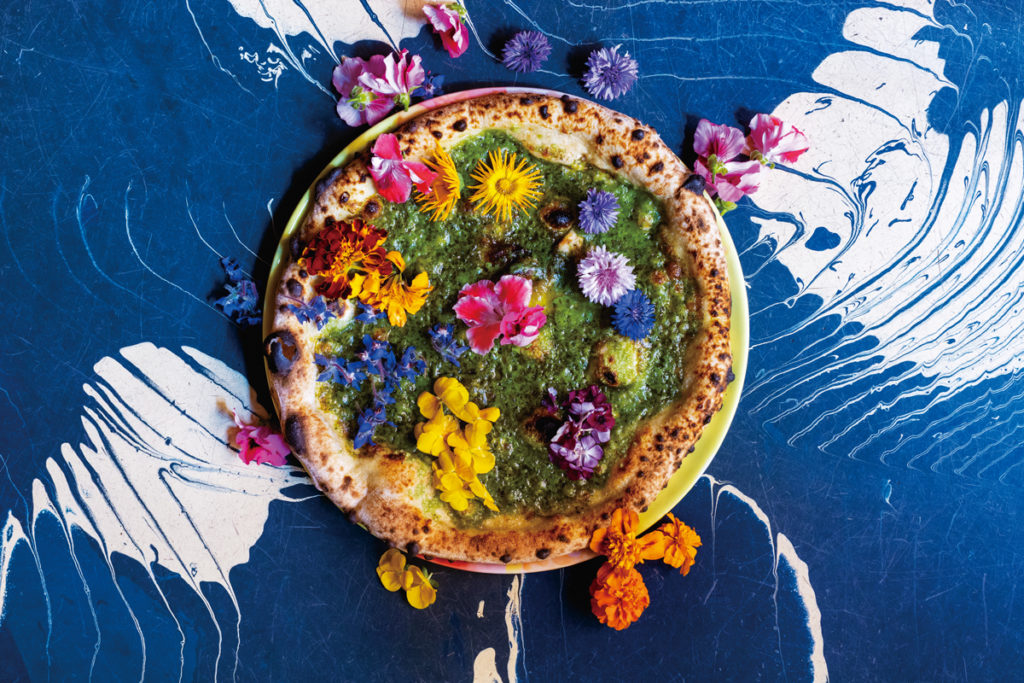
2022 Equinoxes & Solstices
March 21 Spring equinox
June 21 Summer solstice
September 23 Autumn equinox
December 22 Winter solstice
Solstices are the roots of clocks and calendars
We ought to discuss the solstices (summer and winter) side by side with the equinoxes (spring and autumn), featured in the previous edition of Cosmic Pizza. Also recognized by the 24 solar terms in China, the two solstices and the two equinoxes mark the most basic transition points between the seasons. “These four points are also easy to feel with our bodies, so they’re the perfect times for connecting ourselves with the Earth’s movement,” says Kaichi Sugiyama.
The spring equinox has universal grounds for being the starting day of the year, and at its opposite is the autumn equinox—we explained this much the last time. But to find the equinoxes, we must first find the solstices. Let’s rephrase. The equinoxes are Earth’s ultimate balance points, and our only guide to locating them is the opposite balance: the solstices.
Try picturing the primitive clock called the sundial. You’re observing the shadows cast on the ground by an upright pole. It’s easy to make out the point where the shadow is longest: the winter solstice. Then, you determine the opposite point, where the shadow is shortest: the summer solstice. Finally, you’re ready to locate the middle points: the spring equinox and the autumn equinox. (The discovery of the solstices and equinoxes, by the way, also marked the roots of calendars.)
The still and quiet of turning points
The Sun as seen from Earth oscillates above the horizon like a pendulum, centering on the east, over the course of a year. At the spring and autumn equinoxes, the Sun rises due east. During the summer solstice, it rises at the most northerly point relative to the viewer’s location, and during the winter solstice, at its most southerly point. When the weight of the pendulum reaches the end of its swing, it appears to have stopped moving. This is the definition of solstice—it comes from the Latin words sol (“Sun”) and sistere (“standing still”). Sunrise and sunset, the Sun’s meridian altitude, and other changes in the Sun’s movement appear to be on pause for a few days while Earth passes through either of its solstice points. Ebb and flow, good and evil, breathe in and breathe out . . . Every pair of opposites has points where one movement switches to the other. Thus each of these turning points is a solstice.
“During those moments, the movement is very gentle, like when a massive ship is changing its direction of travel, but it can only turn very slowly. For me, those are emotional moments that I like to savor.”
The festive mood of the summer solstice
Let’s draw an analogy between a year and a day. The summer solstice falls on noon, where the Sun in the sky has moved 90 degrees past the spring equinox, and Earth has completed a fourth of its year-long orbit. It’s the turning point in a year on Earth when the amount of light increases and reaches a peak before diminishing again. It’s the highest point of the summer, a day bursting with energy that carries special significance for people living in high latitudes, yearning for the long dark winter to pass and the Sun to return. Midsummer celebrations in Sweden are especially well known, and needless to say, the pizza from Sweden this time expresses the festive occasion.
“The green pesto cheese is the meadow where the Swedish Midsummer takes place. A symbolic birch maypole is raised, and men and women, young and old, gather around it to sing, dance, and share a feast. The flowers on the pizza are a nod to the romantic tradition that says if a young woman picks seven different flowers and puts them under her pillow on Midsummer night, she will dream of her future partner. All kinds of magic come into play on Midsummer night—the supernatural kind and more!”
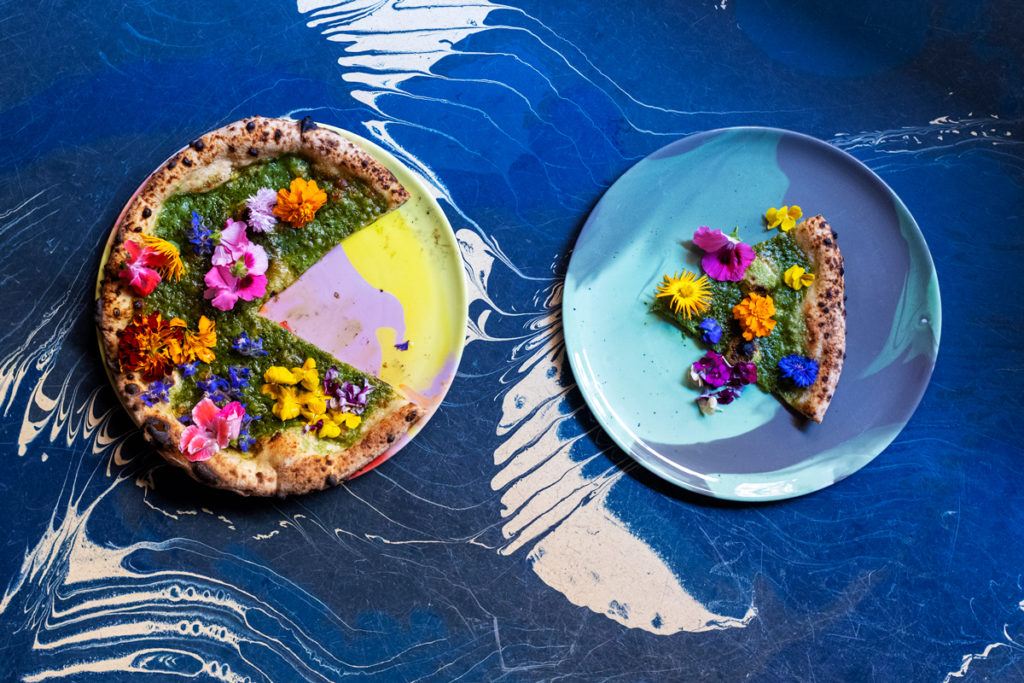
The light of the white night, as well as the polar night, acts like a magnet that draws people together, fills them with elation, and ignites their appetite for love. In fact, word has it that many babies are conceived on this night.
In Japan, the equinoxes are celebrated as national holidays, and many of us are aware of those turning points thanks to customs that have become second nature, like eating botamochi and ohagi sweets, and paying respects to our ancestors during Higan week. Then what about the solstices? Apart from vaguely knowing about the tradition of taking a yuzu bath at the winter solstice, nothing special comes to mind.
“If you ask me, the solstices should be celebrated as global holidays. That’s how important the solstices are, and I see a great opportunity for creating a culture similar to the equinoxes. How cool would it be if we made up a reminder, organized events around it, and watched it develop into a movement? For example, we could designate the summer solstice a day for eating pizza. Then we’d hold a party, others would follow suit, and before we know it, midsummer in Japan will climb to national holiday status for sure.”
Come to think of it, it wasn’t until fairly recently that we Japanese began eating ehomaki rolls for Setsubun and wearing costumes on Halloween. But now that the events have become popular, they naturally stay in mind. Observing traditions is fine, but what’s wrong with also creating new cultures and customs right here and now? Significant dates on the calendar ought to be celebrated, because they will help us attune ourselves to Earth’s cycle. How better to make the first move than via the HELIO COMPASS?
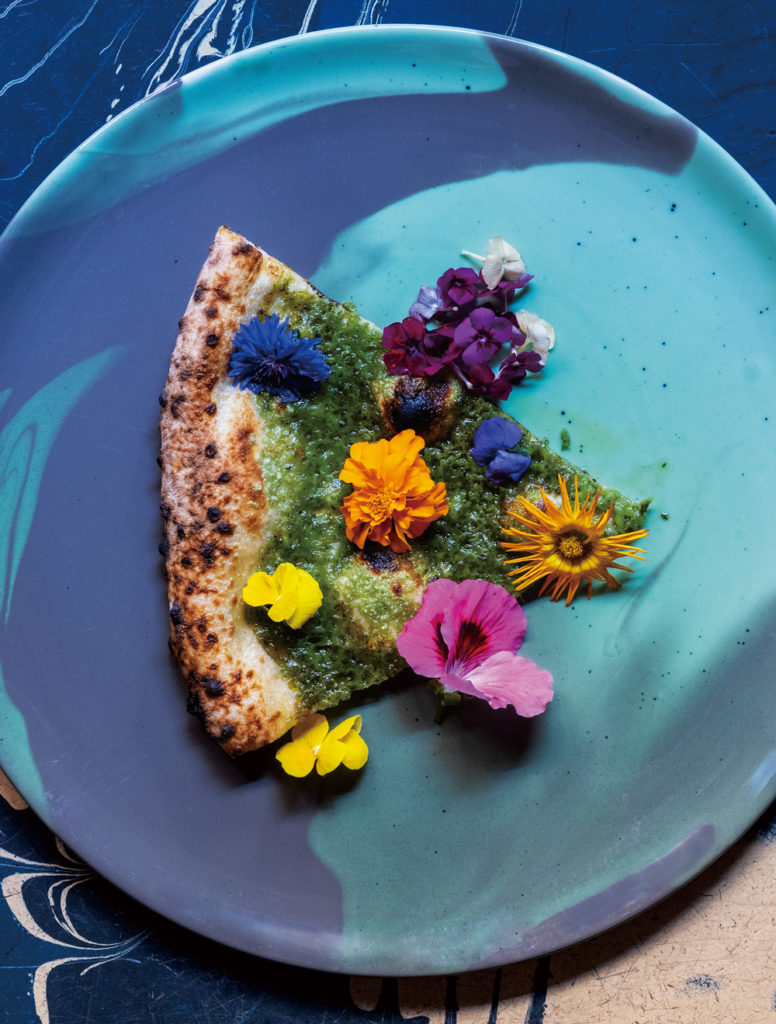
A SLICE OF SPACE
Sweet Dreams (for a magical Midsummer night)
More than anyone else in the world, the people of Sweden yearn for the Midsummer festivities. The buoyant atmosphere is designed into this pizza, with green cheese for the meadow and seven edible flowers that promise sweet dreams.
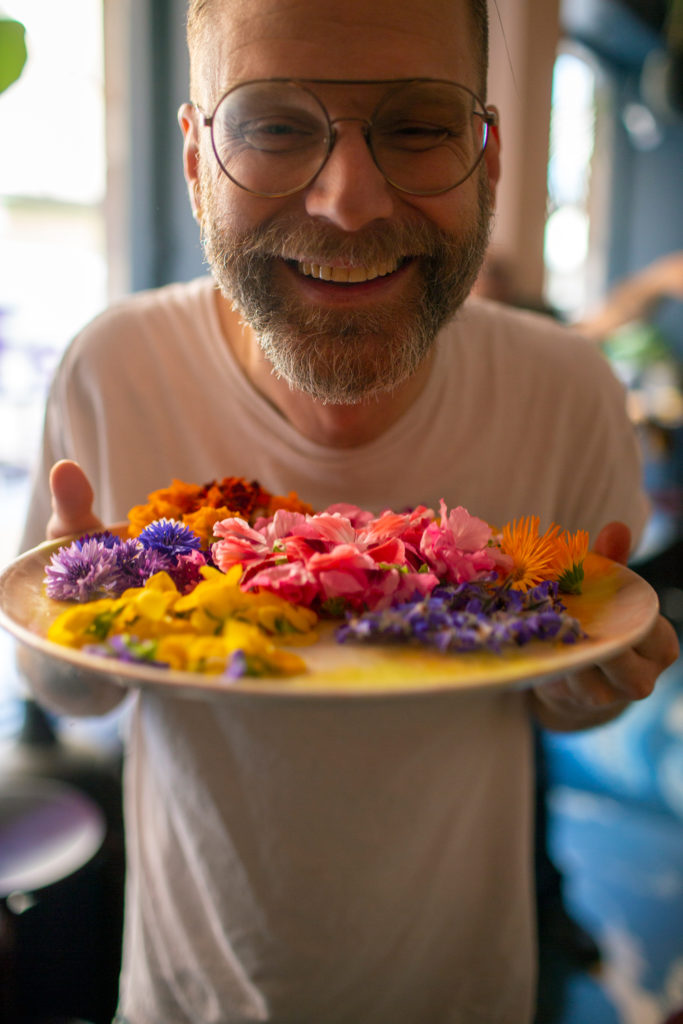
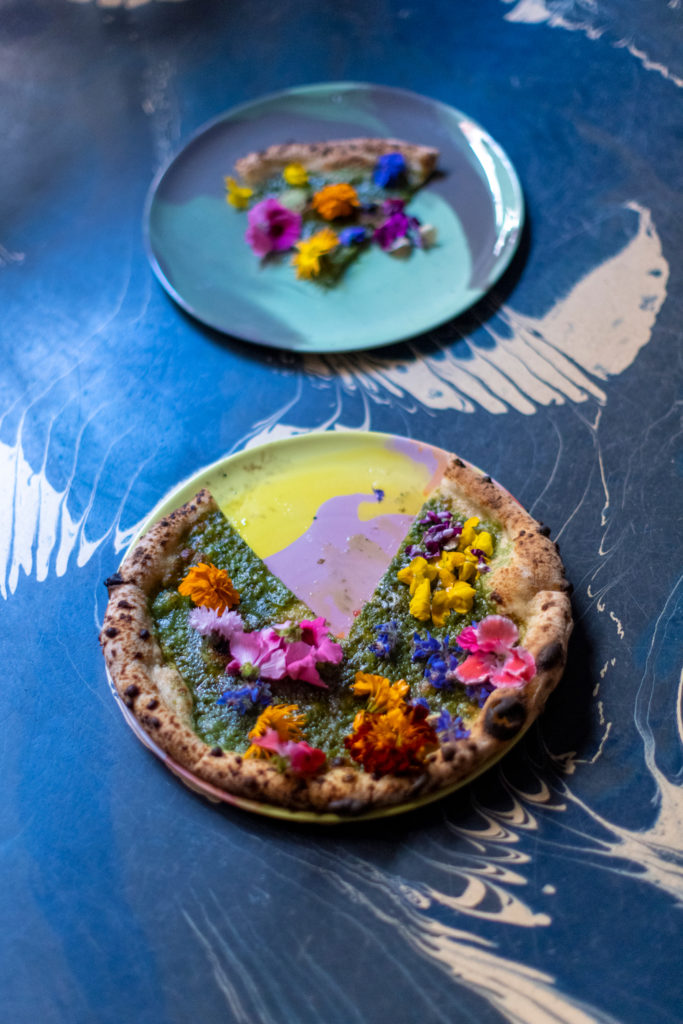
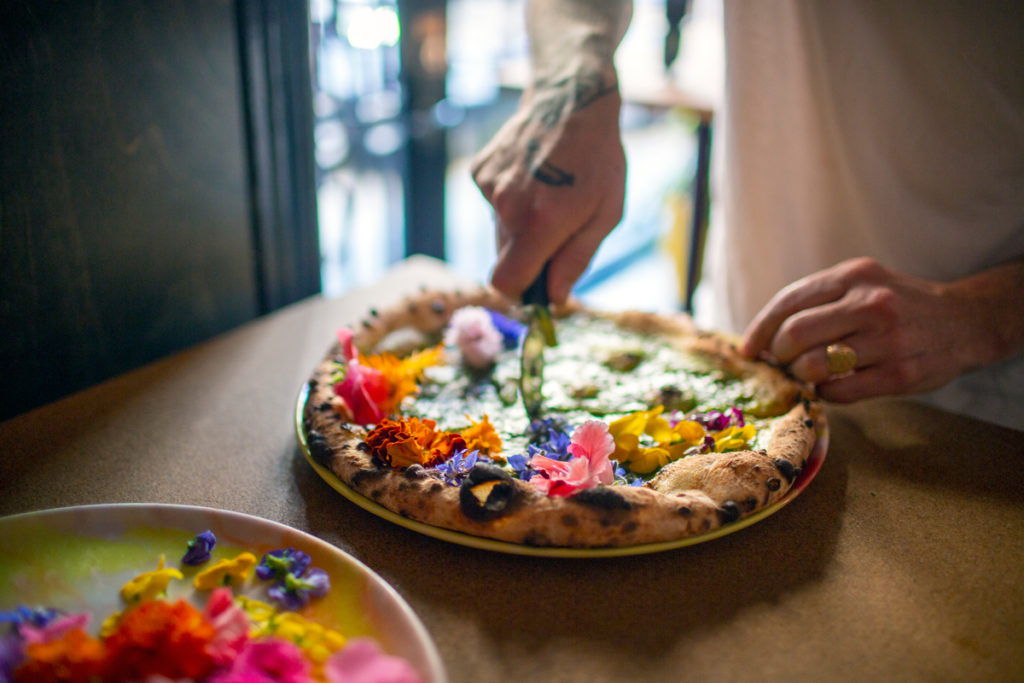
Kaichi Sugiyama
Born 1977 in Shizuoka Prefecture, Sugiyama self-studied calendars and designed the HELIO COMPASS. His invention was inspired, to some degree, by the extremity of time that he experienced in the course of his part-time job at a pizza parlor.












